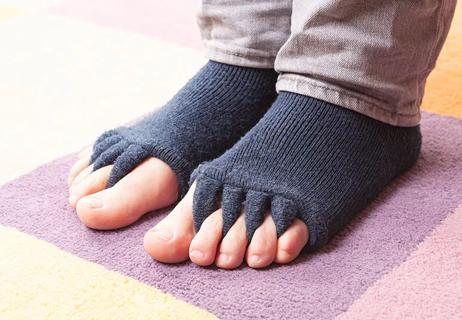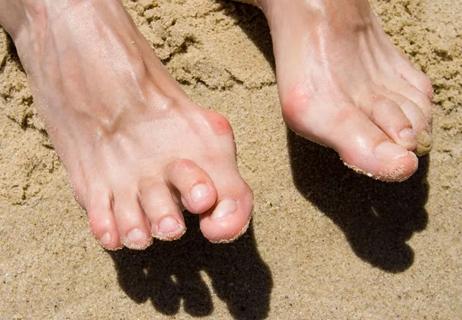The short answer from an orthopaedic surgeon

A: Bunions are common, annoying and painful. Just because you have one doesn’t mean you should rush to surgery. But don’t ignore it either, as untreated bunions can lead to other foot deformities.
Advertisement
Cleveland Clinic is a non-profit academic medical center. Advertising on our site helps support our mission. We do not endorse non-Cleveland Clinic products or services. Policy
With a bunion, the big toe bends toward the second toe, creating a bump at the base of the toe. The bump can become red and swollen. Certain medical conditions, such as rheumatoid arthritis, can raise your risk for developing bunions. But the most common culprit is genetics. You probably inherited a foot shape and biomechanics that puts excess pressure on the big toe.
We recommend seeing a podiatrist who can make an evaluation and help with nonsurgical measures. Properly fitted shoes and shoe inserts with arch support are the place to start. Shoe size and width can change with age, so make sure your shoes are the right size. Choose shoes that have a good heel counter and room for a shoe insert.
Every time you take a step, you put about one-third of your body weight on the long bones in the middle of the foot that connect to the bones in the toes. Using a shoe insert with arch support can more evenly distribute your weight off the bunion area. You can get shoe inserts in a drugstore or have them custom made. A shoe insert can be modified with a soft pad or bar under the ball of the foot to take more weight off the toe, which helps some people.
You can also get pads that fit between the toes to separate them or a sleeve that goes over the bunion to decrease friction.
Advertisement
— Orthopaedic surgeon Thuan Pham, DPM
Advertisement
Learn more about our editorial process.
Advertisement

Some things you find in your house have antifungal properties — but that doesn’t mean they’ll clear your toenail fungus

Wearing shoe inserts, maintaining a healthy weight and using cold or heat therapy may give you relief

Toe spacers and separators can add some comfort, but they’re not a fix-all

Injuring a toe is painful, but is it a serious problem? Find out when to see a doctor and what to do to help your toe heal at home.

Understanding hammertoe, mallet toe and claw toe

Try seated and standing exercises to help lengthen and strengthen the muscles that support your plantar fascia

Keep your tootsies clean, moisturized and consider wearing socks at night

Home remedies are unlikely to cure your contagious foot fungus — and they might even make it worse

Start having sex about 72 hours before ovulation, then at least every other day during your fertile window

Attachment theory suggests that your earliest relationships shape connections throughout your life

It isn’t a recognized mental health disorder, but research shows that problematic social media use can negatively affect your mental health, self-esteem and sleep